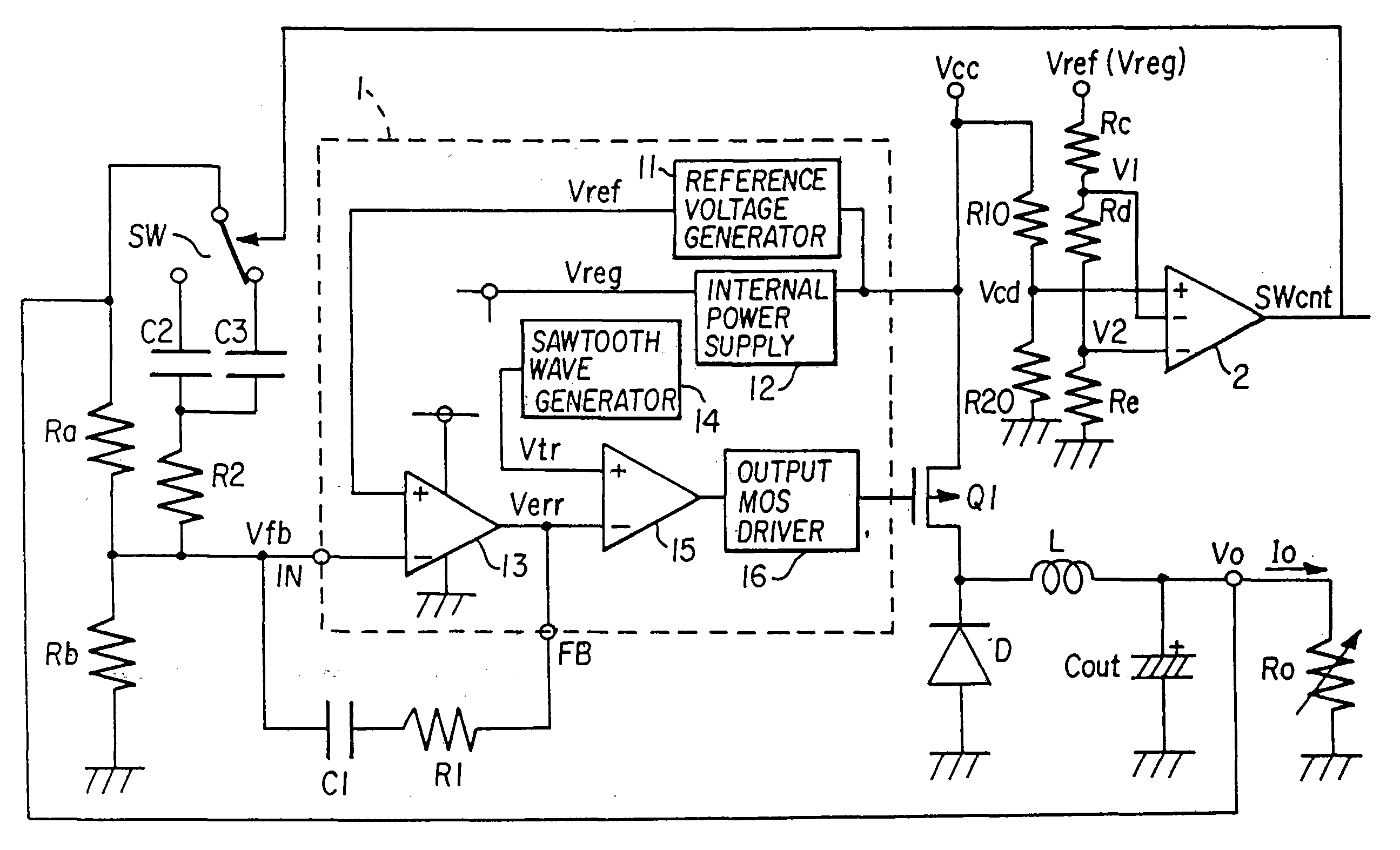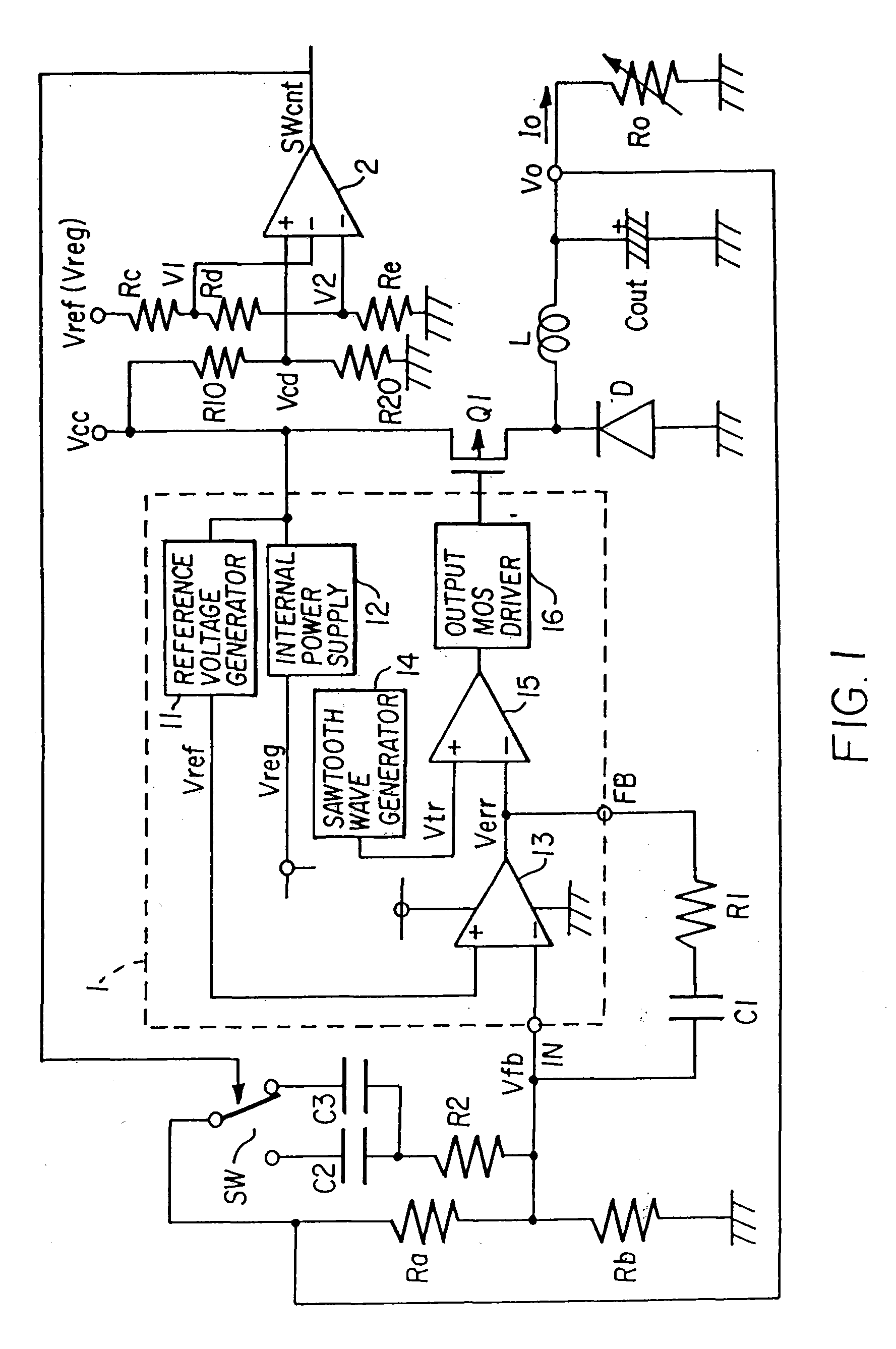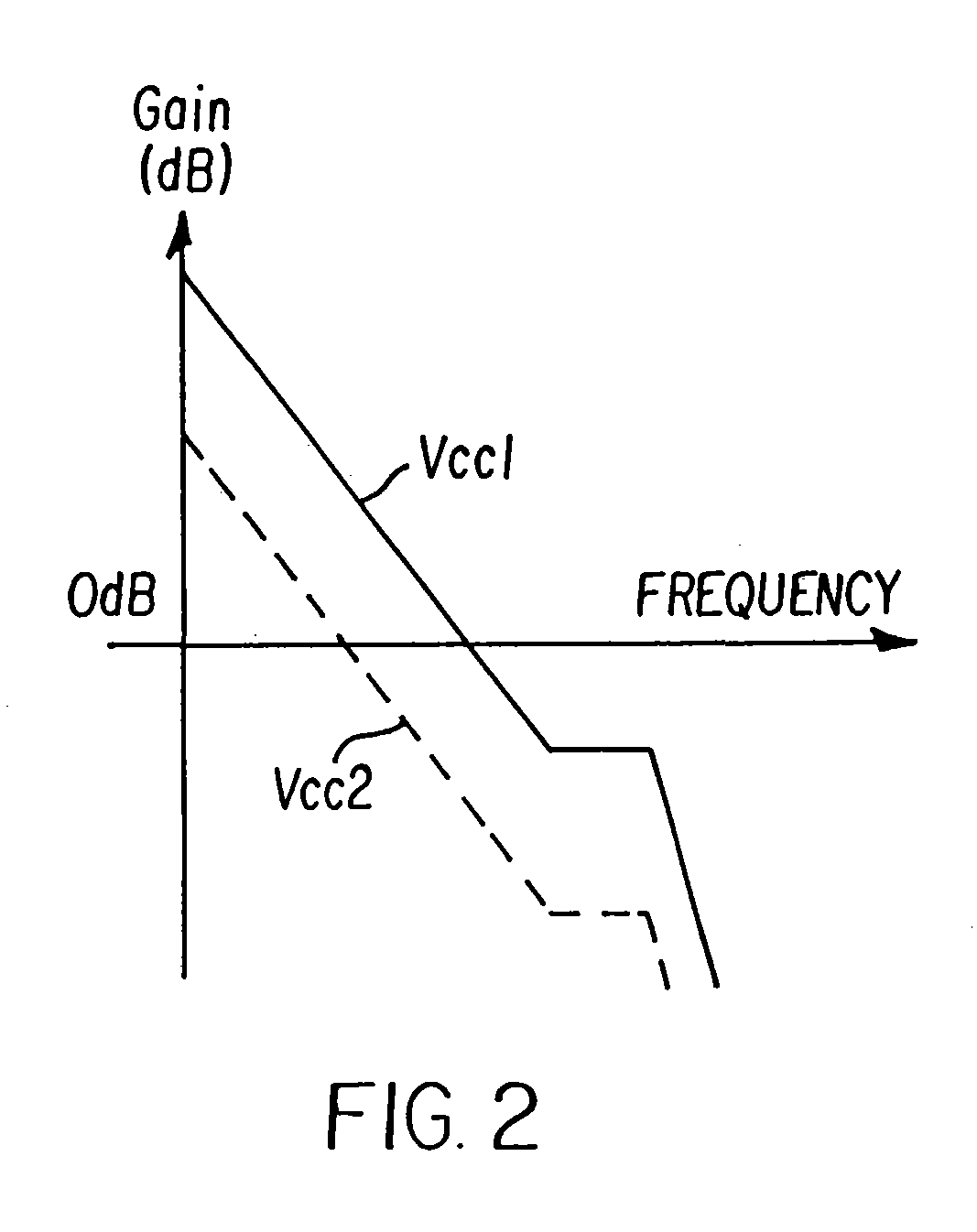Dc-dc converter
a converter and dc-dc technology, applied in the direction of dc-dc conversion, power conversion systems, instruments, etc., can solve the problems of amplification compensation alone being insufficient to obtain adequate stability and response characteristics, and the power conversion efficiency of dc-dc converters is lowered
- Summary
- Abstract
- Description
- Claims
- Application Information
AI Technical Summary
Benefits of technology
Problems solved by technology
Method used
Image
Examples
first embodiment
[0026]Below, preferred embodiments of the invention are explained referring to the drawings. FIG. 1 is a circuit diagram showing the DC-DC converter according to a Here, circuit elements corresponding to those of the circuit of the prior art in FIG. 8 are assigned the same symbols, and explanations thereof are omitted.
[0027]In this aspect, compared with the DC-DC converter of FIG. 8, a comparator 2 which outputs a switching control signal SWcnt, series resistors Rc, Rd, Re which set the reference voltages V1, V2 of this comparator 2, series resistors R10, R20 to voltage-divide the input voltage Vcc and generate a voltage signal Vcd which is supplied to the non-inverting input terminal of the comparator 2, a switch SW, and a capacitor C3 which is selected by the switch SW, are added. The comparator 2, series resistors Rc, Rd, Re, series resistors R10, R20, and switch SW forming switching control device. One end of the series resistors Rc, Rd, Re is connected to the constant voltage ...
second embodiment
[0036]FIG. 3 is a circuit diagram showing the DC-DC converter according to the invention. Here, a difference with the circuit of FIG. 1 is that a load current detection resistor Rs, one end of which is grounded, is added, connected in series to the load Ro, and the voltage thereon Vs is input to the non-inverting input terminal of the comparator 3. That is, whereas the switching control device of FIG. 1 is configured to perform switching according to the magnitude of the input voltage Vcc to the comparator 2, as the switching control device of FIG. 3, the comparator 3 performs switching according to the magnitude of the load current Io. The comparator 3, series resistors Rf, Rg, Rh, and reference voltages V3 and V4 are equivalent to the comparator 2, series resistors Rc, Rd, Re, and reference voltages V1 and V2 of FIG. 1, respectively, and perform the same respective functions. Also, explanations of cases in which hysteresis is and is not present are also similar, and so are omitted...
PUM
 Login to View More
Login to View More Abstract
Description
Claims
Application Information
 Login to View More
Login to View More - R&D
- Intellectual Property
- Life Sciences
- Materials
- Tech Scout
- Unparalleled Data Quality
- Higher Quality Content
- 60% Fewer Hallucinations
Browse by: Latest US Patents, China's latest patents, Technical Efficacy Thesaurus, Application Domain, Technology Topic, Popular Technical Reports.
© 2025 PatSnap. All rights reserved.Legal|Privacy policy|Modern Slavery Act Transparency Statement|Sitemap|About US| Contact US: help@patsnap.com



